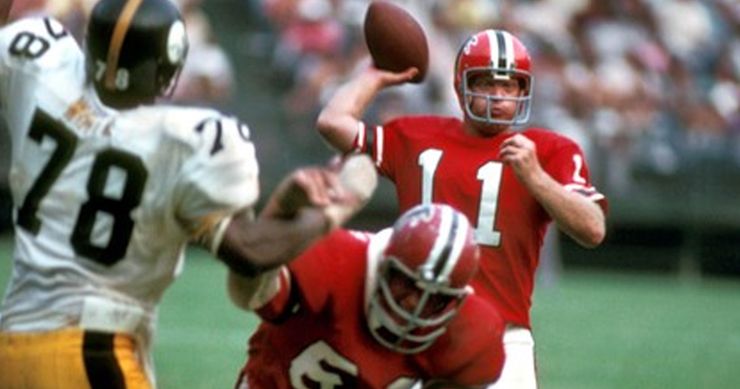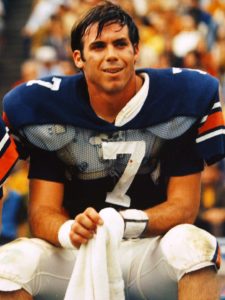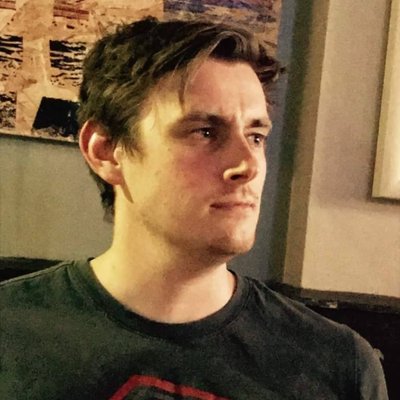The most bizarre NFL Draft Pick in history
The NFL Draft is, arguably, the most important event in the NFL calendar. For one weekend, all previous conceptions about who your team is are thrown out the window. In most cases, it’s a time of unbridled optimism. Every selection could be the selection that takes your team to the top, and, for those at the bottom, it could be the weekend that changes everything.
Nothing is a certainty, however. An early pick in the first round doesn’t always equate to success, and a speculative swing in the later rounds doesn’t mean that player won’t have a career. You only need to look at the contrasting careers of JaMarcus Russell and Tom Brady for evidence of that.
Among the obvious and the logical picks, there are more than a handful of head scratchers. While we’ve seen our fair share of question mark-selections over the years (Aguayo in the second round, anyone?), none compare to a selection made in the 1972 NFL Draft. It involves a team still trying to find its identity, a legendary Western actor, and a rival (allegedly) pouring water on the whole affair. Let me tell you about the most bizarre draft pick in NFL history.
The Broken Birds
Our story begins, as all great stories, do, in 1972. The Dallas Cowboys had won their first Super Bowl title. Don Revie’s Leeds United would take down Arsenal 1-0 in the FA Cup final, and The Rolling Stones released the legendary Exile on Main Street. It truly was a great time to be alive.
Among the comings and goings on the early part of the decade, the Atlanta Falcons had just enjoyed their best ever season. Formed in 1966, the Georgia natives had endured something of a rocky start to life in the NFL. An abysmal 3-11 debut season saw them somehow regress to 1-12-1 in 1967. While they were showing signs of gradual improvement, they owned a woeful combined record of 16-51-1 in their first 5 seasons. 1971 was different, however. Sure, it had its ups and downs, but the side really seemed to hold its own. Under the watchful eye of Norm Van Brocklin, the Falcons ended the season 7-6-1, recording their first ever winning season
The Dirty Birds hadn’t done enough to make the playoffs, mind. What you have to consider is that, as we know, wins were hard to come by in Atlanta. A season where they win more than they lose? Fulton County Stadium punters would have ripped your arm off for that. With Richard “Dick” Shiner (steady on) under centre, James “Cannonball” Butler running up the gut, and the legendary Tommy Nobis returning from injury, the 1972 season was one Falcons fans could go into with some optimism.

The Quiet Man
Marion Morrison was an athlete. Plain and simple. At 6 foot 4 and 169lbs, he was the ideal size and build to succeed in football. He was a smart kid, too. At Glendale High School, Morrison was the senior class president, sports editor of the schools newspaper, and played a key role in the schools 1924 football teams league title. The guy was a star, and Colleges noticed.
While his preference (the US Naval Academy) saw an unsuccessful application, Morrison was accepted into the University of Southern California on an athletic scholarship. Morrison would line up as an Offensive Tackle for Howard Jones’ USC Trojans. With a College education, and playing for one of the Countries premiere College sides, Morrison looked set to become a football star.
Best Laid Plans
Unfortunately for Morrison, however, his football career would hit an abrupt end. While body surfing, Morrison was involved in an accident that saw him break his collarbone. In the modern day, that wouldn’t necessarily be an issue. In the 1920s, however, the athletic scholarship program was vastly different to how it is now. Unable to play football, Morrison’s scholarship was revoked. With debts he owed to fraternities growing, and no means to pay them off, Morrison was forced into work.
Fortunately, John Ford, a film director at Fox Studios and long time attendee of USC Trojans football games, had befriended Morrison during his time as a player. Marion’s friendship with Ford blossomed, and his role in film became more and more prominent, netting a lead role in Raoul Walsh’s 1930 Western The Big Trail. Morrison earned a cool £105 a week, however the studio requested he take on a stage name.
Walsh’s suggestion of “Anthony Wayne” was cast aside for being “too Italian”. “John Wayne”, however, would prove to be American enough. The rest, as they say, is cinematic history.
Draft Day
The 1972 NFL Draft was vastly different to the modern day draft format. While the current draft consists of 7 rounds over 3 days, in 1972 there were 17 rounds over 2 days. It’s not much of a stretch to suggest it was an arduous process. Nevertheless, it was vitally important. At the top, a battle of defensive ends was waged between the Buffalo Bills and Cincinnati Bengals, who were in line to select Walt Patulski and Sherman White, out of Notre Dame and California respectively. Imagine the Jameis Winston/Marcus Mariota debate from 2015; that’s kind of what we have here. Both in terms of player ability, and the eventual impact both players had on the league.
For the Atlanta Falcons, the strategy was obvious. The side were on the up, and, with 3 picks in the first 2 rounds, were in a position to take the next step. Cast aside would be the shackles of being an expansion team; the new, improved Atlanta Falcons were about to introduce themselves to America.
With their first pick, Atlanta selected Clarence Ellis, a Safety from Notre Dame. Ellis was a 1971 All-American, and part of the Notre Dame side to win the 1971 Cotton Bowl against the unbeatable Texas Longhorns. With their second, Quarterback Pat Sullivan. In College, Sullivan was something else. An All-American, the 1971 Heisman Trophy, the 1971 Walter Camp Award winner. For comparison, the big fish in the 2020 Quarterback class, Joe Burrow, also won these awards. Even his school, Auburn, retired his 7 jersey. With the very next pick, the Falcons gave their QB of the future some protection, selecting Offensive Tackle Steve Okoniewski out of Washington.

Atlanta picks...
The Falcons draft strategy was clear. They wanted leaders, they wanted winners, and they wanted to change the culture around the team. With the first 3 picks, they’d taken a player who could defeat the undefeated, the best Quarterback in College, and a protection policy for him. Both for now, and for the future, they were setting themselves up.
Atlanta continued to bolster their squad over the two day stretch. However Norm Van Brocklin, the team’s de-facto General Manager, wasn’t satisfied. The draft was going well, all considered, but it lacked something. Some things can’t be learned at College, and some of those things weren’t prevalent in the class of ‘72. Coach Van Brocklin knew this.
In a moment of epiphany, Van Brocklin stood up, and asked his war room directly: “Do we want the roughest, toughest S.O.B in the draft?!?”. The room was unanimous in its agreement, because who is going to say no to their boss in a moment of borderline madness? Van Brocklin put the call into NFL headquarters and proudly proclaimed “Atlanta takes John Wayne of Fort Apache State.”
The Pick
The pick was posted, and seemingly accepted. It was the second day of the 17 round marathon, after all. Team officials were tired, and bored, and wanted to be anywhere other than New York. According to the Florence Tri-Cities Daily newspaper, the pick was met with “tired titters from the gallery.” Who knows, perhaps this “John Wayne” character could be something of a diamond in the rough?
The Falcons, on the other hand, revelled in the pick. A representative of the team described Wayne as “a big, strong guy who has also had some success in a couple of movie roles.” Then commissioner, Pete Rozelle, wasn’t even going to humour that scenario. Amid a trade between New Orleans and Washington, the pick was nullified, and the Falcons were forced to, instead, select Bill Holland, a Running Back product of John Wayne’s alamata. Were the New Orleans Saints to blame for the failed selection? That isn’t for me to say.
But yes, they were.
The Atlanta Falcons were unable to capitalise on their strong draft during the 1972 season. Dick Shiner was deemed surplus to requirements, and the team went with a Quarterback pairing of Bob Berry and Pat Sullivan. It was another up and down year for the side. At 7-5 with two games to play, however, a play-off berth was a real possibility. A top of the division clash at the rival San Francisco 49ers in week 13 would decide who took the top spot in the NFC West. They were blown out 20-0, and lost their home closer 17-14 to the Kansas City Chiefs.
Evidently distraught that his professional football career aspirations had been dashed at the age of 64, Marion Morrison went back to his work. In 1972, he starred in The Cowboys, a Western (of course) that received relatively warm praise. He was, after all, approaching the end of his career, and so his output began to slow. He did appear in several pictures between then and his death in 1979, however, including a cameo role in a little known 1977 space indie film by an upstart named George Lucas.
Could Wayne have impacted the Atlanta Falcons in 1972? Probably not. He would have shifted a jersey or two, though.

Thomas Willoughby
NFL ANALYST & SOCIAL MEDIA
THOMAS IS A WRITER AND THE SOCIAL MEDIA CONTENT PROVIDER FOR THE TOUCHDOWN. YOU CAN FIND HIM @WILLO290592 ON TWITTER
